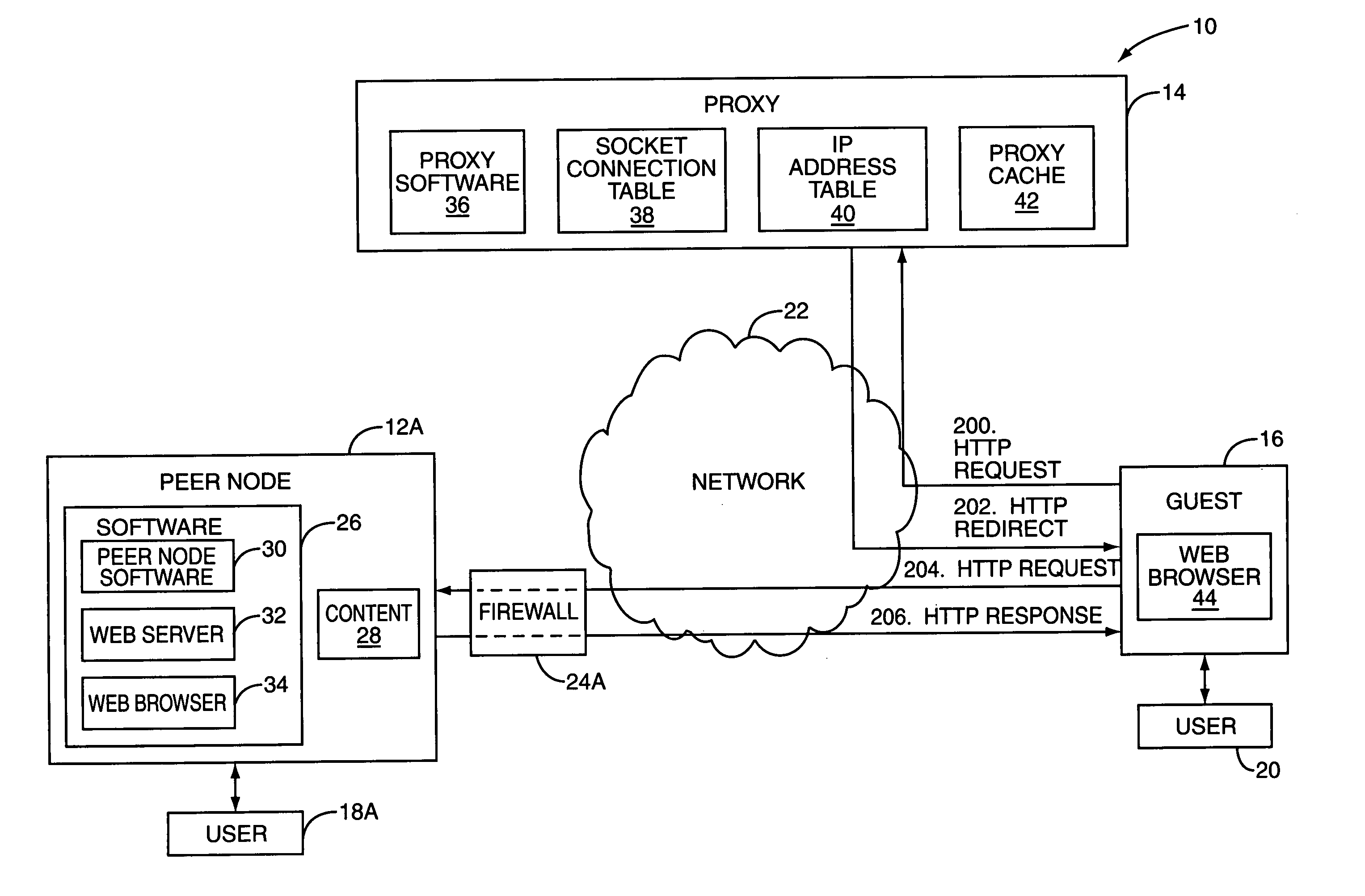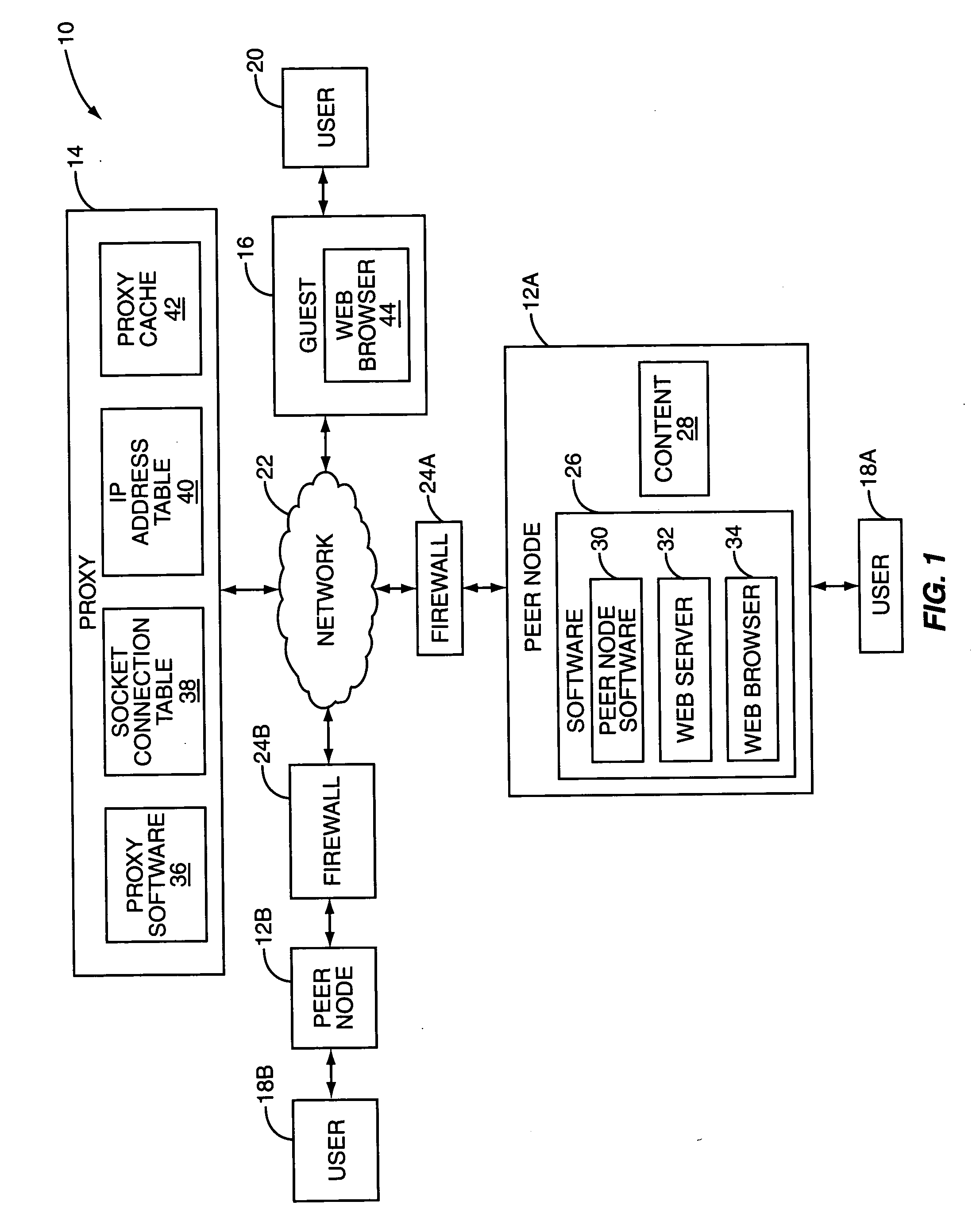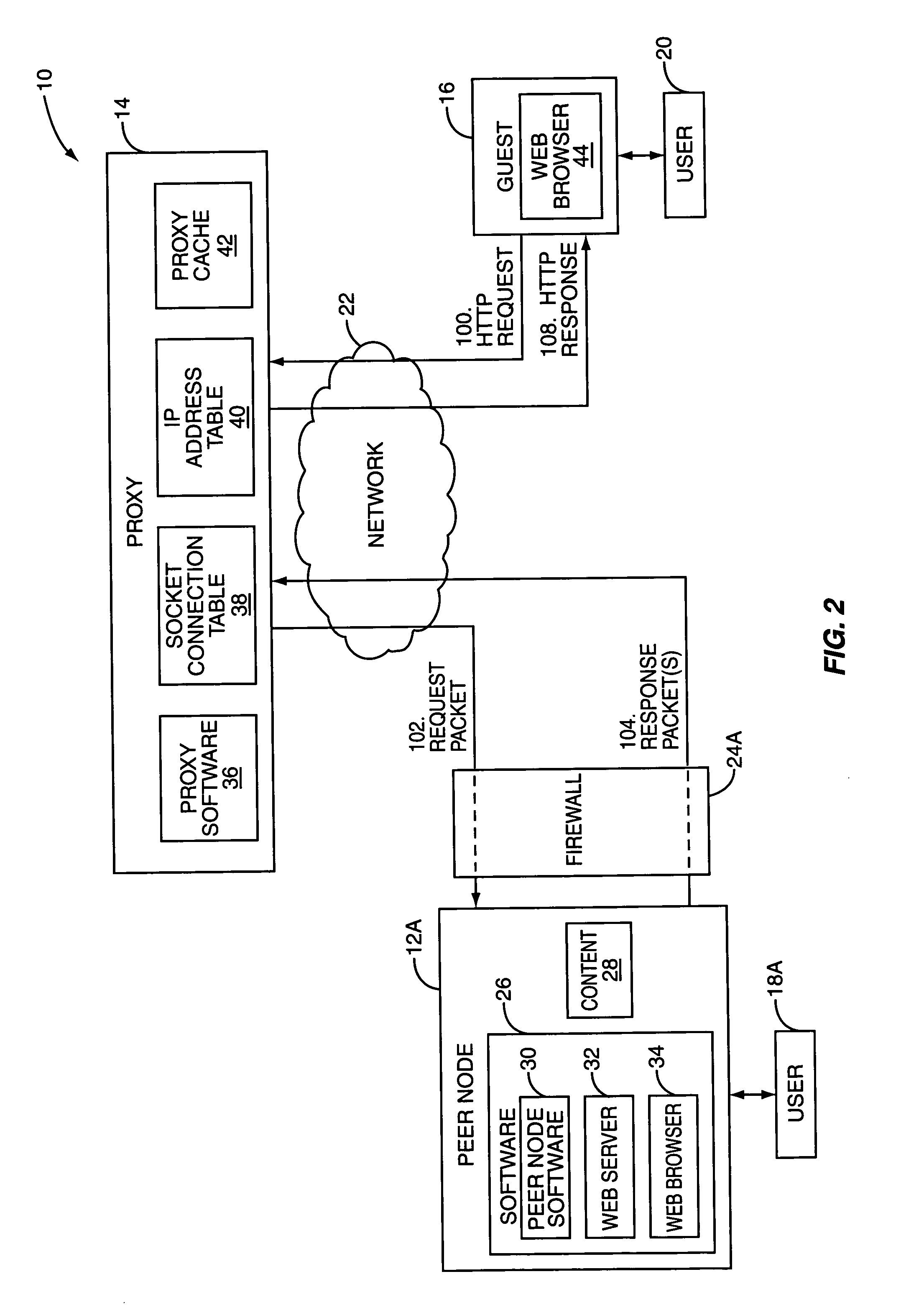System and method for lowering proxy bandwidth utilization
a technology of proxy server and bandwidth utilization, applied in the field of peertopeer network for sharing digital content, can solve the problem and achieve the effect of lowering the bandwidth utilization of the proxy server and lowering the proxy bandwidth utilization
- Summary
- Abstract
- Description
- Claims
- Application Information
AI Technical Summary
Benefits of technology
Problems solved by technology
Method used
Image
Examples
Embodiment Construction
[0018] The embodiments set forth below represent the necessary information to enable those skilled in the art to practice the invention and illustrate the best mode of practicing the invention. Upon reading the following description in light of the accompanying drawing figures, those skilled in the art will understand the concepts of the invention and will recognize applications of these concepts not particularly addressed herein. It should be understood that these concepts and applications fall within the scope of the disclosure and the accompanying claims.
[0019] The present invention provides a hybrid peer-to-peer system that lowers proxy bandwidth utilization. In general, the proxy server examines a Hypertext Transfer Protocol (HTTP) request for digital content residing at a peer node. If the digital content is bandwidth rich content such as a digital image, video, or audio, then the proxy server sends an HTTP redirect message including the Uniform Resource Locator (URL) of the ...
PUM
 Login to View More
Login to View More Abstract
Description
Claims
Application Information
 Login to View More
Login to View More - R&D
- Intellectual Property
- Life Sciences
- Materials
- Tech Scout
- Unparalleled Data Quality
- Higher Quality Content
- 60% Fewer Hallucinations
Browse by: Latest US Patents, China's latest patents, Technical Efficacy Thesaurus, Application Domain, Technology Topic, Popular Technical Reports.
© 2025 PatSnap. All rights reserved.Legal|Privacy policy|Modern Slavery Act Transparency Statement|Sitemap|About US| Contact US: help@patsnap.com



